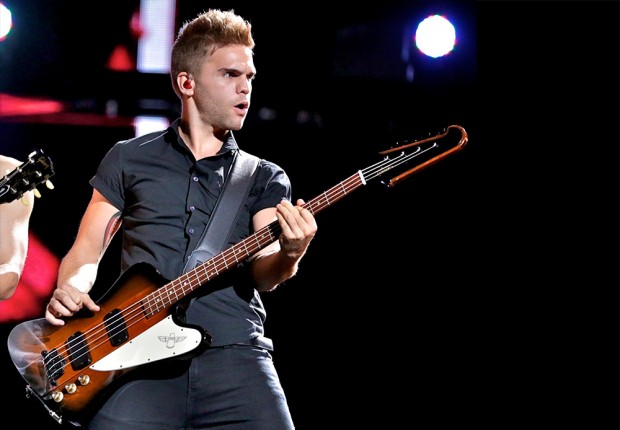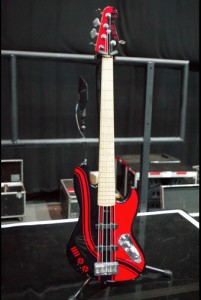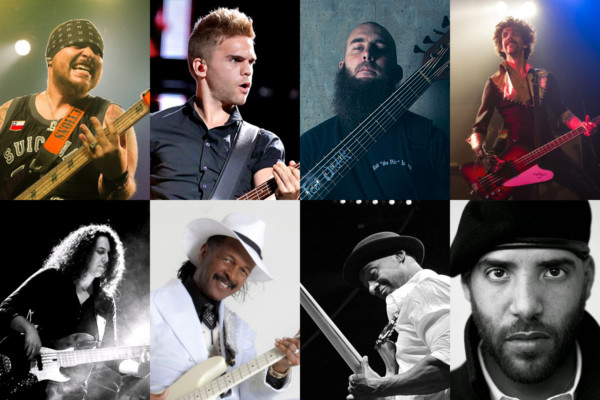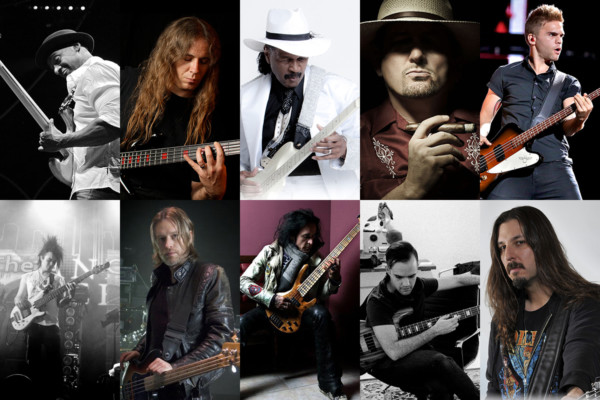Going Up: An Interview with Sandy Beales

Behind every major pop star, there’s usually a cast of talented musicians backing them up. This includes the wildly popular boy band One Direction, who get their groove from bassist Sandy Beales. Since 2011, the London-based low-ender has been touring the world with the “What Makes You Beautiful” singers and playing to sold-out crowds.
But his playing doesn’t stop there. He’s also spent plenty of time in the studio with other acts ranging from jazz to R&B to rock.
We caught up with Beales to get the scoop on his influences, his gear, and what it takes to get the gig.
How did you get your start playing bass, and who were your early influences?
It’s a funny story really. At 15, my friend was planning to start a band and needed a bass player. I didn’t even know what a bass was at the time, but I managed to get hold of one and that was it… within the week I was hooked.
Flea from the Chili Peppers was a huge influence on me at the time – those funky, prominent lines on tracks like “Sir Psycho Sexy” and “Aeroplane” caught my ear straight away and opened my eyes to the idea that bass could have a prominent role in a band.
As well as Flea, I’ve always been a huge fan of Pino Palladino – for all different reasons I guess. His ability to just sit back and make any track have an instant groove regardless of artist or genre had a strong impact on my mindset. [He’s] a true session chameleon.
The ultimate bass player for me will always be James Jamerson. His innovative, experimental style, solid groove and pure balls to just play what he felt bring a lot of those old Motown records to life. I was lucky enough to visit Hitsville in Detroit last year during a tour, [and it was] an amazing experience to see where those Motown records were cut and to learn a bit of the history.
How did you land the One Direction gig?
In the Autumn of 2011 they held auditions in London, and fortunately I fit the bill for what they were looking for. Since then it’s all gone a bit crazy. From what we originally thought would be a UK tour became two world tours and performances on many of the world’s most prestigious TV shows and awards ceremonies. It’s been an incredible whirlwind ride and with a stadium tour already planned for next year, it’s still rolling.

One Direction gigs are huge. How do you deal with playing for that many people? Did you have to fight your nerves early on?
I’m very fortunate to have never suffered too badly with nerves. I would be more nervous playing to 100 people rather than 100,000. I guess on the bigger stages you feel a little less connected with the crowd, and it’s easy to just let loose. I’m really looking forward to the stadium tour next year. Playing some of those iconic venues is a dream come true.
What is your touring rig?
[I play] an Overwater Jazz 5-string, a Fender Marcus Miller Jazz V 5-string and a Gibson Thunderbird 4-string. The Fender and Overwater are both absolute powerhouses – great thick full tone from both and the Fender is so slick to play.
The Gibson is great for the rockier tunes. The tone is huge, especially with a pick. It took a little getting used to, but once I got over the famous top heaviness, it felt great.
[My amplification includes] an EBS Fafner II Head, a 18? subwoofer, and an Avalon U5 D.I. I have been endorsed by EBS for a while now and absolutely love the sound of their amps. The Fafner is an absolute beast – huge lows and snappy highs fit perfectly for the bass sound I like to create.
[My effects and accessories include] a Boss TU-3 tuner, an EBS MultiComp Compressor, an Electro Harmonix Big Muff Pi Bass, and a MXR M83 Bass Chorus Deluxe.
The Overwater looks amazing. What’s the story on your custom finish?
 Thanks man, glad you like it. I got it custom-finished by the guys at Sims Custom in the UK. I really like the 2-tone idea and red and black stood out immediately. The lines are based on American muscle car racing stripes and the logos are the same as [my] tattoos. People always comment on it, so I’m glad I had it done. The guys at Sims were top notch.
Thanks man, glad you like it. I got it custom-finished by the guys at Sims Custom in the UK. I really like the 2-tone idea and red and black stood out immediately. The lines are based on American muscle car racing stripes and the logos are the same as [my] tattoos. People always comment on it, so I’m glad I had it done. The guys at Sims were top notch.
How do you prepare for heading out on long tours?
For prep on a big tour, it’s important to double check all the gear before heading out to eliminate any problems that may come up. It’s also really worth taking things to occupy your downtime, which there can be a lot of. I always travel with an audio interface, which has proven to be invaluable a few times either for practice or for laying down bass on tracks I have been working on.
You also play sessions for other rock, pop, and R&B musicians. What are the most important skills to have for getting such diverse work?
I think for becoming a diverse player it’s important to listen to a wide range of music and absorb as much as possible in order to bring an authentic bass sound to whatever genre or artist you are working with. Transcribing bass lines is great for this – really getting to learn about the note choices and rhythms that are used in certain styles of music.
Also becoming familiar with the different kinds of basses is important, be it upright, fretless, acoustic or synth. If there is a certain sound that will fit well with a track and you can turn up and deliver it, everyone will be happy. I used to play a lot of upright bass for artists and my first national TV appearance was on upright.
What’s one track you think every bass player should transcribe?
I would have to go with two tracks: “What’s Going On” by Marvin Gaye and “Heard It Through The Grapevine” by Gladys Knight and the Pips. Both are Jamerson lines, but with slightly different approaches.
“Heard It Through The Grapevine” is an absolute masterpiece, with funky 16th note fills all over the place. But it never once feels busy.
“What’s Going On” has more space but the bass really sticks out on the track, almost as a counter melody to the vocals at times. Both tracks really show how Jamerson pioneered the idea that a bass player could have more than just a simple supporting role.
Pop music is sometimes put in a negative light as being too commercial and less musical. How do you respond to those critics?
I guess people will always have their opinions, and that’s cool. I guess the essence of music is that it is so subjective and completely down to each individual listener. That being said, I feel like it’s important to not dismiss any genre. You never know what you are missing out on. If you broaden your horizons musically, you often find tracks or bass lines that you absolutely love.
What advice do you have for bassists trying to get into the pop world?
My number one top tip would be become a “Yes Man.” Any gig you are offered, take it. Play as many shows as you can with as many different people. Trust me, it’s fun.
A few years ago I decided to take this approach, and it opened my eyes and ears to a huge range of music and people I would never have normally encountered. Sure, I played many gigs that I didn’t necessarily love, but it was all good fun and eventually led me to where I am in my career at the moment.
Give it a try, see where it takes you.


